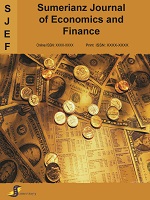Sumerianz Journal of Economics and Finance

Online ISSN: 2617-6947
Print ISSN: 2617-7641
Quarterly Published (4 Issues Per Year)
Journal Website: https://www.sumerianz.com/?ic=journal-home&journal=26Archive
Volume 2 Issue 7 (2019)
How Investment Does Affect Unemployment in a Developing Economy
Authors : Anowor Oluchukwu F. ; Uwakwe Queendaline Chinyere ; Chikwendu Nneka Francisca
Abstract:Thoroughly going through studies on unemployment tends to submit that investment, despite its strong empirical connection with unemployment, seemed to be relegated and ignored as a key variable behind solving unemployment threats. This study estimating a dynamic model with error correction was able to expound with empirical evidence using data from Nigeria between 1980 and 2017 that investment is capable of creating opportunities for employment of idle resources thus reducing the level of unemployment in a developing economy. Hence a justification for the assumption of the “Two-Gap model” that filling Saving-Investment gap will boost employment conditions. Recommendation therefore demands that attentions should be channeled towards investment (especially private investments) to ensure that available resources are attractive enough to attract both local and foreign investors at any given opportunity.
Sensitivity Analysis of Operational Priorities
Authors : Ntogwa N. Bundala
Abstract:Specifically, this paper examines the applicability and effectiveness of the African Development Bank’s priorities known as the “High-Five priorities” in poverty eradication in Africa. These priorities are agriculture, industries, regional integration, infrastructures and quality of human life. The study uses exploratory research strategy and simple random technique. The panel data are sampled from 2013 to 2017 in 48 Sub -Saharan African countries. The random effects model and vector autoregressive (VAR) model are used to analyse the data. The study finds that the High-Five Bank priorities are ineffective to reduce the income and non-monetary poverty rate in a short – term and evidenced to be effective for long-term. Moreover, the priorities evidence to have a power to reduce the poverty gap in a short-term. The paper recommends that the prioritising on the High-Five priorities is a relevant for the long- term goals, but lacks its relevance for short- term interventions. Therefore, for optimal poverty eradication strategy, short- term and long- term strategy are required.



